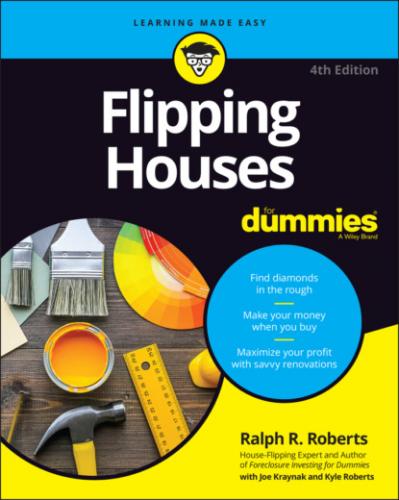Surveying Different Strategies
When developing a game plan, you try to maximize your strengths, minimize your weaknesses, and fully exploit the opportunities that surround you. Many flippers have already developed their own strategies that achieve these three goals. By becoming more aware of these existing strategies, you can choose the one that fits you best and perhaps even improvise to develop your own, unique strategy.
In the following sections, I reveal house flipping strategies that many flippers practice with varying levels of success.
Buy into a hot market
In a sizzling real estate market, you can turn a profit fairly quickly by buying a house, moving in, and then sitting back and watching the real estate values soar. This approach works only if you have time on your hands, are speculative by nature, and have a knack for purchasing houses in a hot market at just the right time. This strategy offers several benefits:
If the market remains strong, your property value rises and you don’t have to lift a finger.
Your equity in the property rises, boosting your borrowing power for other investments.
When you live in the home for two years or more, up to $250,000 of your profit ($500,000 for a couple filing jointly) may be tax free, at least according to the tax laws in place when I was writing this book. See Chapter 23 for more tax-saving tips.
Soaring property values often create a housing bubble, which can burst, leaving you with a home that’s worth less than the amount you paid for it.
Stuff happens. You can have a great house at a great price in a hot market with the top agent working to sell it and the house still may not sell. Prepare yourself for all contingencies.
Chapter 5 has more details on evaluating the real estate market in any neighborhood you’re scoping out.
Buy low, do nothing, sell quick
Occasionally, you stumble on a house that’s priced significantly below market value and requires few or no repairs. The property may be in foreclosure or perhaps is part of an estate that’s being liquidated, making the owner highly motivated to sell. By being at the right place at the right time with ready cash, a solid plan, and a friendly, approachable demeanor, you can pounce on the deal and put the house back on the market the very same day!
Sounds great, huh? Well, getting a house that’s far below market value is ideal when it happens, but being in the right place at the right time requires time, effort, and luck. You need to build a solid team (see Chapter 3 for details), do plenty of research, secure some solid investment capital (see Chapter 4 for tips on financing the flip), and be properly equipped to execute this strategy.
Buy low, apply makeup, sell quick
You can learn a lot from used car dealers. The first thing they do when they take possession of a vehicle is clean and polish it and vacuum and deodorize the interior. Looking and smelling its best, that used car can sell for a handsome profit.
Even a good home, if not clean and well maintained, can look disheveled and smell stale. Many homeowners place their homes on the market with no proper staging (showcasing). They don’t mow the lawn, trim the bushes, touch up the paint, or even tidy up the house during showings. Unknowingly, they turn away prospective buyers and lower the profit potential of their property.
This kind of home gives you a perfect opportunity to swoop in and snag a great deal. You buy the home for significantly less than market value, add elbow grease, and then resell the home for thousands of dollars more than you invested in it. In Chapter 21, I show you how to properly market and stage a home to attract top dollar.
Buy low, renovate, sell high
Some homes are undervalued because they’re missing an essential feature — a livable living room, a third bedroom, a deck, or a laundry room on the main floor. Other homes may have major eyesores, such as an outdated kitchen or bathroom. In either case, moderate to major renovations may improve the marketability of the house and its profit potential in two ways:
Increase the home’s actual value: Wear-and-tear depreciate a home over time. Updates restore value, and added living space can boost the house into a higher price bracket.
Expand the pool of interested house hunters: A two-bedroom house, for example, appeals only to people who are looking for a one- to two-bedroom house. Adding a third bedroom attracts anyone looking for a one- to three-bedroom house or a house with office space.
Adding to the real value of a home is a useful way to maximize your profit — but don’t take on more than you can handle or build a mansion among bungalows. If you’re a weekend warrior or you have contractors on your team (see Chapter 3 for details), consider this strategy. If not, you may want to hold off until you get to know some local contractors.
Buy low, move in, renovate, sell high
To maximize your profit, reduce expenses, and take a more hands-on role in rehabbing a home, consider moving into the home and renovating it at your own pace. If you and your family don’t mind living in the chronic chaos of a construction zone, this approach is appealing, for several reasons:
By living in the home you’re flipping, you avoid
